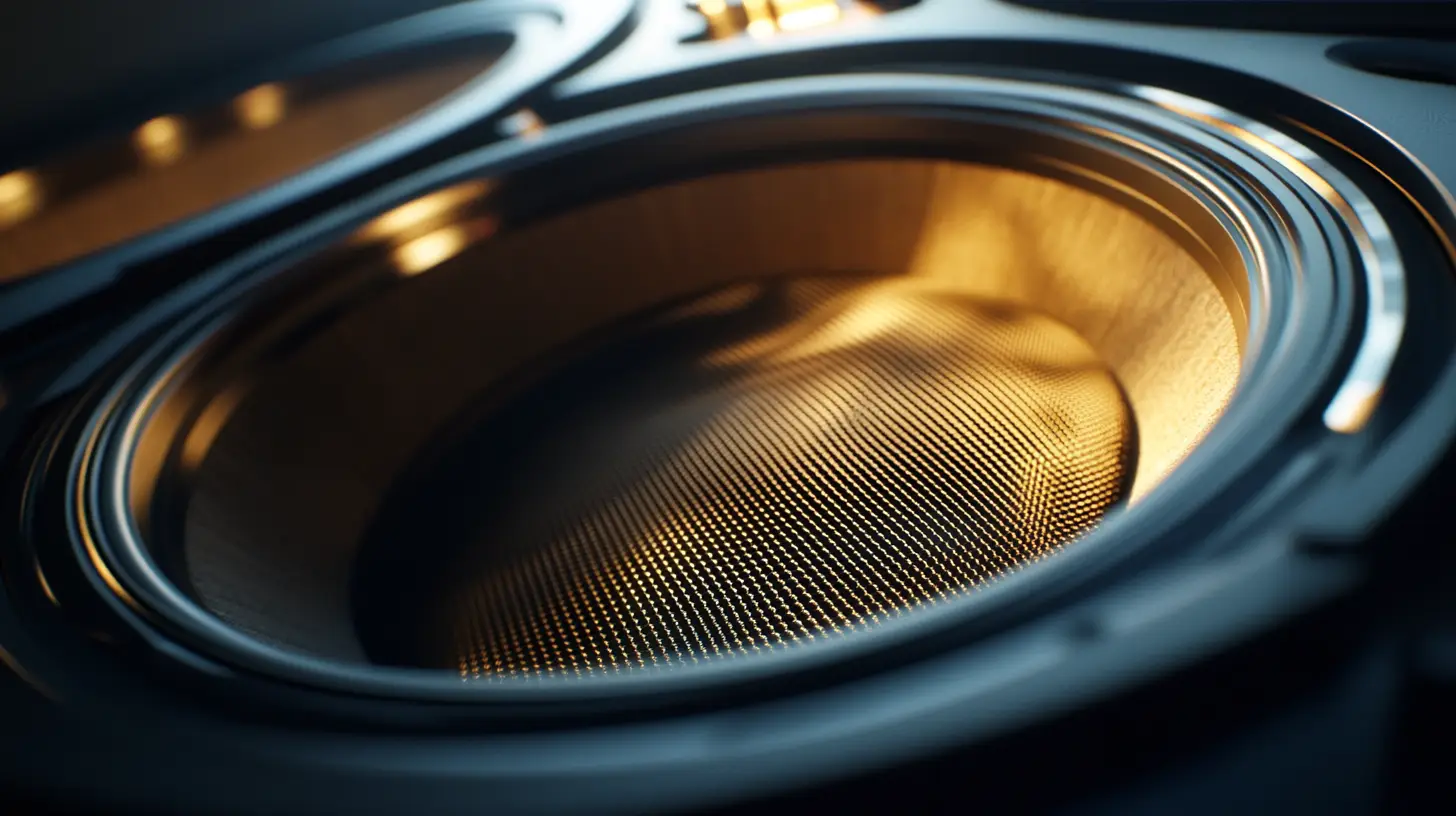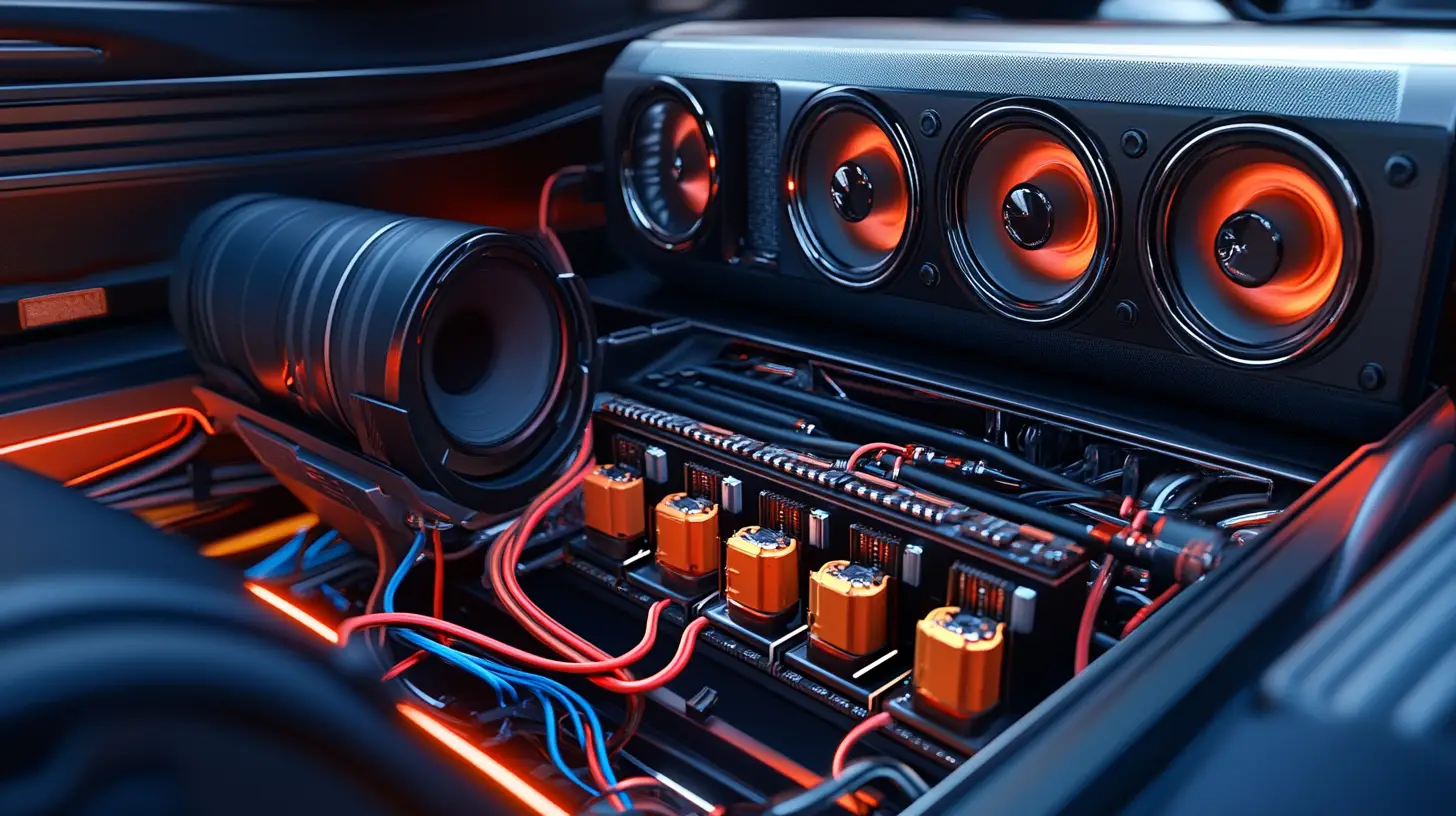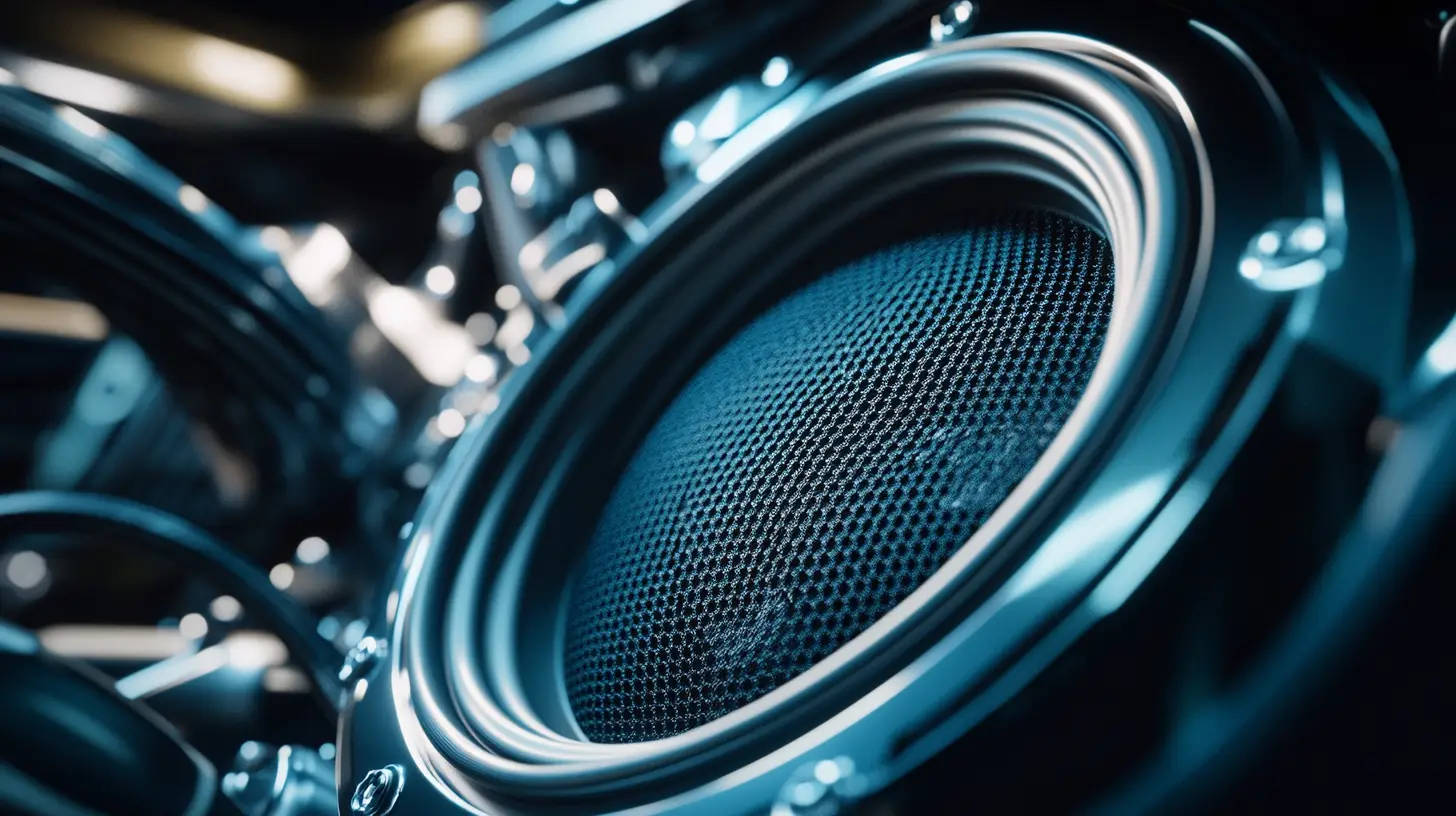Subwoofer Power Handling: Understanding RMS vs. Peak Watts

This blog post delves into subwoofer power handling, focusing on the critical differences between RMS and peak watts. We’ll discuss their impact on performance alongside crucial aspects like enclosure size, matching subwoofers with amplifiers, XMax, size, impedance, sensitivity, and the risks of surpassing recommended wattage. We’ll also spotlight popular brands like Audiomobile and Eton Audio, offering insights for an informed subwoofer choice.
What is power handling in a subwoofer, and why is it important?
Power handling in a subwoofer refers to the amount of power (in watts) a subwoofer can handle without sustaining damage. It’s crucial because exceeding the power handling capacity can lead to distortion, overheating, or even permanent damage to the subwoofer, impacting sound quality and longevity.
Understanding RMS and Peak Watts
When it comes to subwoofer power handling, there are two wattage specifications that you need to familiarize yourself with – RMS and peak watts. These specifications provide insights into how much power a subwoofer has continuous power handling capability and the maximum amount of power it can handle in short bursts.

The Concept of RMS Watts
The RMS, or continuous power rating, shows the sustainable power a subwoofer’s RMS rating can handle, which is crucial for avoiding distortion and thermal damage. A higher subwoofer’s RMS rating ensures clear, distortion-free sound, especially during extended use, making it a key factor for those upgrading car audio systems.
The Concept of Peak Watts
Peak power handling indicates a subwoofer’s maximum power in short bursts, crucial for clear bass during dynamic audio peaks. It’s important to understand that subwoofers shouldn’t continuously operate at these peak levels, which can cause distortion and damage.
Peak power handling indicates a subwoofer’s capacity for short bursts of power, crucial for clear bass during dynamic audio peaks. Preventing potential damage during surges is vital, but continuous peak-level operation can cause distortion and harm.
Brands Overview: Audiomobile and Eton Audio
Now that we better understand RMS and peak watts, let’s take a closer look at two reputable subwoofer brands – Audiomobile and Eton Audio. These brands are known for their power handling capabilities, sound quality, and overall performance.
Audiomobile Subwoofers: Power and Performance
Audiomobile subwoofers are renowned for their power-handling capabilities, delivering consistent sound quality output. The power handling rating of Audiomobile subwoofers is suitable for demanding audio applications, providing clarity of sound reproduction.
With a thermal damage threshold guaranteed by their high RMS power rating, Audiomobile subwoofers prevent distortion, ensuring fidelity even at higher power levels. The power level of Audiomobile subwoofers, combined with their motor structure, delivers robust bass response and sound clarity, making them an excellent choice for car audio enthusiasts seeking an upgrade.
Eton Audio Subwoofers: Delivering Quality Sound
Eton Audio subwoofers are engineered to provide the best sound quality, power handling, and frequency response, catering to various audio needs. The power handling rating of Eton Audio subwoofers ensures distortion-free sound output, serving audio enthusiasts’ requirements.
Like Audiomobile subwoofers, Eton Audio offers peak power handling, delivering powerful bass and sound clarity, even during power surges. The thermal damage threshold of Eton Audio subwoofers, determined by their high RMS power rating, prevents sound distortion, ensuring fidelity and an immersive listening experience.
The Influence of Enclosure Size on Subwoofer Power Handling
Enclosure size is a crucial factor in determining the subwoofer power handling capabilities of a subwoofer. A larger enclosure typically allows for better power handling, providing more space for the subwoofer to move air and dissipate heat effectively. This results in improved overall performance, higher power output, and enhanced sound quality. Different types of enclosures, such as sealed, ported, and bandpass, have varying effects on subwoofer power handling. Sealed enclosures are known for their tight and accurate bass response but may require more power to produce louder sounds. Ported enclosures, on the other hand, can enhance low-end frequency response and increase overall power handling by utilizing the air from the port to boost sound output. When selecting an enclosure size for your subwoofer, it’s essential to consider factors like the subwoofer’s specifications, desired sound quality, and available space in your vehicle or home audio setup. You can optimize your power handling capacity and achieve optimal audio performance by choosing the right enclosure size that complements your subwoofer’s capabilities.
How Enclosure Size Affects RMS and Peak
The right enclosure size is crucial for a subwoofer’s RMS and peak power handling, affecting sound quality and bass clarity. The size of the speaker cone or driver also plays a significant role in this aspect. A larger enclosure enhances bass response and heat dissipation and reduces the risk of thermal damage, ensuring clear, distortion-free sound even at high power levels.
Subwoofer Enclosure size is crucial for handling subwoofer RMS and peak power, affecting sound quality, bass response, and heat dissipation. A larger enclosure enhances bass clarity and reduces the risk of thermal damage, ensuring distortion-free sound at higher power levels. Thus, choosing the right enclosure size is essential for optimal subwoofer performance.

Choosing the Right Enclosure for Optimum Power Handling
The correct subwoofer enclosure size is crucial for maximum power handling and clear, distortion-free audio. This choice enhances your listening experience by ensuring high-fidelity sound.
Sealed vs. Ported Enclosures: Impact on Power and Performance
When configuring your subwoofer system, choosing between sealed and ported enclosures can significantly affect the subwoofer power handling capabilities and overall sound performance. Sealed enclosures, also known as acoustic suspension designs, provide a more controlled environment for the speaker cone, enhancing frequency response and offering tighter bass. They excel in sound quality, producing a smooth output across various frequencies, making them suitable for music genres that require precision.
On the other hand, ported enclosures, or bass reflex boxes, incorporate a vent or port that allows air to escape, enhancing the enclosure’s efficiency. This design can increase the subwoofer’s output at specific frequencies, providing a more pronounced bass response, especially at lower frequencies. However, ported enclosures may sacrifice some clarity and precision compared to sealed enclosures.
Ultimately, the choice between sealed and ported enclosures will depend on your specific audio preferences and the sound system you aim to achieve. Understanding how these designs impact frequency response and power handling capabilities will help you decide on your subwoofer setup.
Decoding the Subwoofer and Amplifier Match
Now, let’s examine the importance of subwoofer and amplifier matching and how RMS and peak wattage ratings affect this process.
The Role of RMS and Peak Watts in Matching Subwoofers and Amplifiers
Understanding RMS and peak wattage ratings is crucial for matching subwoofers and amplifiers. As discussed earlier, RMS wattage indicates continuous power handling, which is essential for subwoofer performance.
On the other hand, peak subwoofer power handling rating refers to the amount of power a subwoofer can handle in short bursts. Correctly matching subwoofer and amplifier power levels is essential for sound quality, ensuring that both components work together harmoniously.
The Importance of Matching Impedance for Optimal Performance
Matching impedance is a crucial aspect of setting up an efficient car audio system. The level of power delivered to a subwoofer is heavily influenced by the impedance rating of both the subwoofer and amplifier. When the impedance levels are matched correctly, the amplifier can effectively deliver enough power to the subwoofer, ensuring that it operates within its optimal range. However, improper setups may result in delivering less power to the subwoofers. This balance, including the option of series wiring, not only enhances sound quality but also prevents distortion and potential damage to your equipment.

To achieve this, choosing an amplifier that complements your subwoofer’s impedance rating is essential. For instance, if your subwoofer has a 4-ohm rating, selecting an amplifier designed to work with a 4-ohm load is ideal. This alignment allows for the efficient transfer of power, ensuring that your subwoofer can perform at its best without the risk of being underpowered or overdriven.
Maintaining the correct impedance match between your subwoofer and amplifier is vital for maximizing performance. This practice enhances the overall sound quality of your car audio system and contributes to its longevity by preventing operational strain. Additionally, it is essential for achieving optimal overall sound quality in your audio experience.
The Impact of XMax on Subwoofer Efficiency
Next, let’s explore the impact of XMax, another important spec, on subwoofer efficiency and power handling.
Understanding XMax and its Relation to Power Handling
XMax, or maximum linear excursion, refers to a subwoofer’s maximum amount of cone movement, usually measured in millimeters. XMax, power handling, and cone suspension are interconnected, and together, they impact subwoofer performance.
Proper handling of power output, impedance, and XMax ensures the longevity of DVC subwoofers, prevents thermal damage, and enhances sound fidelity. XMax, power handling, and voice coil specifications are crucial for a subwoofer’s power handling rating, ensuring that the subwoofer can handle enough power output without distortion.
Optimizing Subwoofer Efficiency
Selecting subwoofers with the correct XMax rating is essential to optimize subwoofer efficiency. Proper XMax management and subwoofer rms power rating, impedance, and cone suspension enhance bass clarity, fidelity, frequency response, and power output.
Understanding XMax, rms amp rating, impedance, and electrical system specifications, such as wiring diagrams, crossover settings, and sensitivity, is crucial for subwoofer power handling optimization. Audio enthusiasts can achieve the best sound quality, bass response, and listening experience by optimizing subwoofer power handling.

Bigger Subwoofer Means Louder Sound
Generally, larger subwoofers with high power handling ratings produce more profound bass response and louder sound output. This is because larger subwoofers can move more air, producing more powerful bass.
However, it is essential to note that simply choosing a giant subwoofer does not guarantee a louder sound. Proper power matching of more giant subwoofers, amplifier rms wattage rating, impedance, and cone suspension is crucial to achieving the best sound quality, bass output, and listening experience.
Practical Tips for Enhancing Subwoofer Setup
Position your subwoofer for maximum efficiency by removing it from walls to reduce sound reflections. Experiment with different placements to find the optimal position for balanced bass response. Ensure proper power input matching between the amplifier and subwoofer to prevent overpowering or underpowering. Utilize high-quality cables and connections to maintain signal integrity and minimize interference. Regularly check and adjust settings like crossover frequencies and phase alignment to fine-tune your sound system’s performance.
Positioning Your Subwoofer for Maximum Efficiency
Proper positioning of your subwoofer can dramatically influence its power handling and overall sound quality. To achieve the best sound quality, it’s essential to consider the placement of your subwoofer within the vehicle. Ideally, a subwoofer should be positioned in a way that allows it to utilize the available cabin space effectively, maximizing the sound pressure levels produced.
One common approach is to place the subwoofer in the trunk or cargo area of the vehicle, facing towards the rear. This setup takes advantage of the rear wave created by the speaker cone, allowing the sound to resonate throughout the cabin. Additionally, keeping the subwoofer away from corners and tight spaces can help reduce unwanted bass cancellation effects, providing a more straightforward and powerful sound.
Experimenting with different placements can help you identify the optimal position for your specific vehicle and audio setup. By fine-tuning the location of your subwoofer, you can achieve enhanced sound quality, improved bass response, and a more enjoyable listening experience.
Frequently Asked Questions
The difference between RMS and Peak
Let’s address a common question about subwoofer power handling specifications – the difference between RMS and peak watts.
RMS, or Root Mean Square, is a subwoofer’s average continuous power. At the same time, peak watts refer to the maximum power a subwoofer can handle for short bursts, such as audio peaks in music or movie soundtracks.
Select based on RMS wattage for optimal subwoofer performance, accurately reflecting continuous power handling. Matching this with your amplifier’s RMS output prevents damage and ensures sound quality.
Which wattage rating matters?
When selecting a subwoofer, prioritize RMS wattage rating over peak wattage. RMS indicates continuous power handling, essential for sound quality and performance, while peak wattage reflects short-term power surges. This choice ensures optimal sound and system reliability, fully using that power by matching the amplifier’s output to the subwoofer’s rms rating.
Conclusion
In conclusion, understanding the difference between RMS and peak watts is crucial when selecting a car subwoofer for your sound system. RMS watts represent the continuous power handling capability of the subwoofer, while peak watts refer to its maximum power handling capacity in short bursts. It’s essential to choose a subwoofer power handling that matches the power output of your amplifier to ensure optimal performance and the best performance, preventing any damage. Factors such as impedance and sensitivity also affect the subwoofer’s overall performance. To delve deeper into this topic, check out our “Ultimate Guide for Car Audio Subwoofer Enclosures” blog for a more comprehensive guide.
